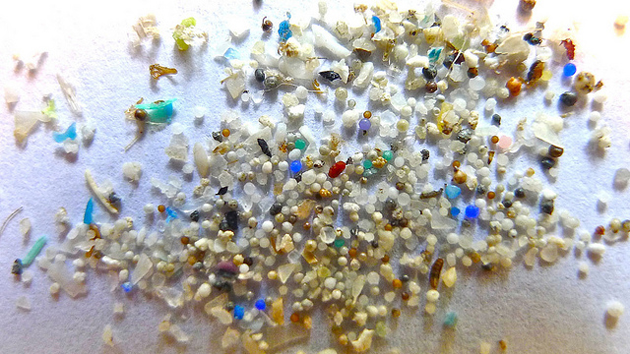
Your Toothpaste May Be Loaded With Tiny Plastic Beads That Never Go Away
California is the latest state to consider banning products with microbeads, the tiny pieces of plastic, often less than a millimeter wide, that have become a popular addition to cosmetics and personal care products. Usually made of polyethylene, microbeads primarily serve as exfoliants in face washes and body scrubs, but also can be found in toothpastes, lip balms, and moisturizing creams.
May 28, 2015 | Source: Mother Jones | by Julia Lurie
California is the latest state to consider banning products with microbeads, the tiny pieces of plastic, often less than a millimeter wide, that have become a popular addition to cosmetics and personal care products. Usually made of polyethylene, microbeads primarily serve as exfoliants in face washes and body scrubs, but also can be found in toothpastes, lip balms, moisturizing creams, and makeup. A single tube of face scrub contains about 350,000 microbeads, according to environmental non-profit 5 Gyres Institute. Plastic microbeads are often cheaper than other common natural exfoliants like apricot seeds, coconut husks, or diatomaceous earth. But recently, consumers and politicians have become concerned about their impact on the environment and human health.
What’s the environmental impact of microbeads?
Microbeads are so small that they aren’t caught by most water treatment plants, so they wind up in lakes, streams, and oceans. According to a report by New York’s attorney general, 19 tons of microbeads are discharged into the state’s waterways each year. Assuming all Americans are dumping microbeads at that rate, 300 tons per year end up in US waterways.
The beads, which can resemble fish eggs, are mistaken for food and ingested by fish and other marine animals. The plastic also acts as a sponge for toxins, soaking up pesticides, phthalates, and heavy metals and carrying them through the food chain. Tuna and swordfish are turning up with microbeads in their stomachs.
What’s the health impact of microbeads?
The movement to ban microbeads has really gathered steam because of concerns about their effects on human health. In March 2014, dental hygienist and blogger Trish Walraven sounded the alarm with a article about how she was finding “bits of blue plastic in my patients’ mouths every single day.” The plastic, she wrote, came from Crest toothpaste, and it was getting stuck in patients’ gums. Now, dentists are concerned that the microbeads trap bacteria, possibly causing gingivitis. Procter and Gamble, which makes the toothpaste, insists that microbeads are safe, but has pledged to rid Crest products of plastic microbeads by next March.
